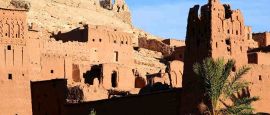Morocco History, Language and Culture
History of Morocco
Whether you're strolling through the narrow streets of a medina, shopping for spices in a busy souk, or following a tour guide up to a remote Berber village, you can't escape the power of Moroccan history and the unique influences from the Berber, Arab, African, and later Spanish and French.
The indigenous Berber people are thought to have lived in Morocco, especially the Atlas Mountains range, for thousands of years. They survived through the Ancient Roman period and later a cycle of rising and falling Islamic dynasties. In 1884, Spain established a protectorate in coastal areas of Morocco and then the French came in 1912 and made Morocco their protectorate (while Spain was allowed to operate in Zones of influence in northern and southern Morocco).
In 1956, Morocco gained its independence following unrest but Spain kept its two coastal enclaves – Ceuta and Melilla. Sultan Mohammed V was reinstalled; this means that the Alaouite dynasty, which has been reigning since 1666, continues to rule to this day.
Did you know?
• The Guinness World Records consider al-Qarawiyyin or Karueein University, founded in Fez in 859, to be the oldest in the world.
• The world's largest swimming pool is in Casablanca. It is 480m (1,574 ft) long and 75 m (246 ft) wide, and has an area of 3.6ha (8.9acres).




 You know where
You know where
